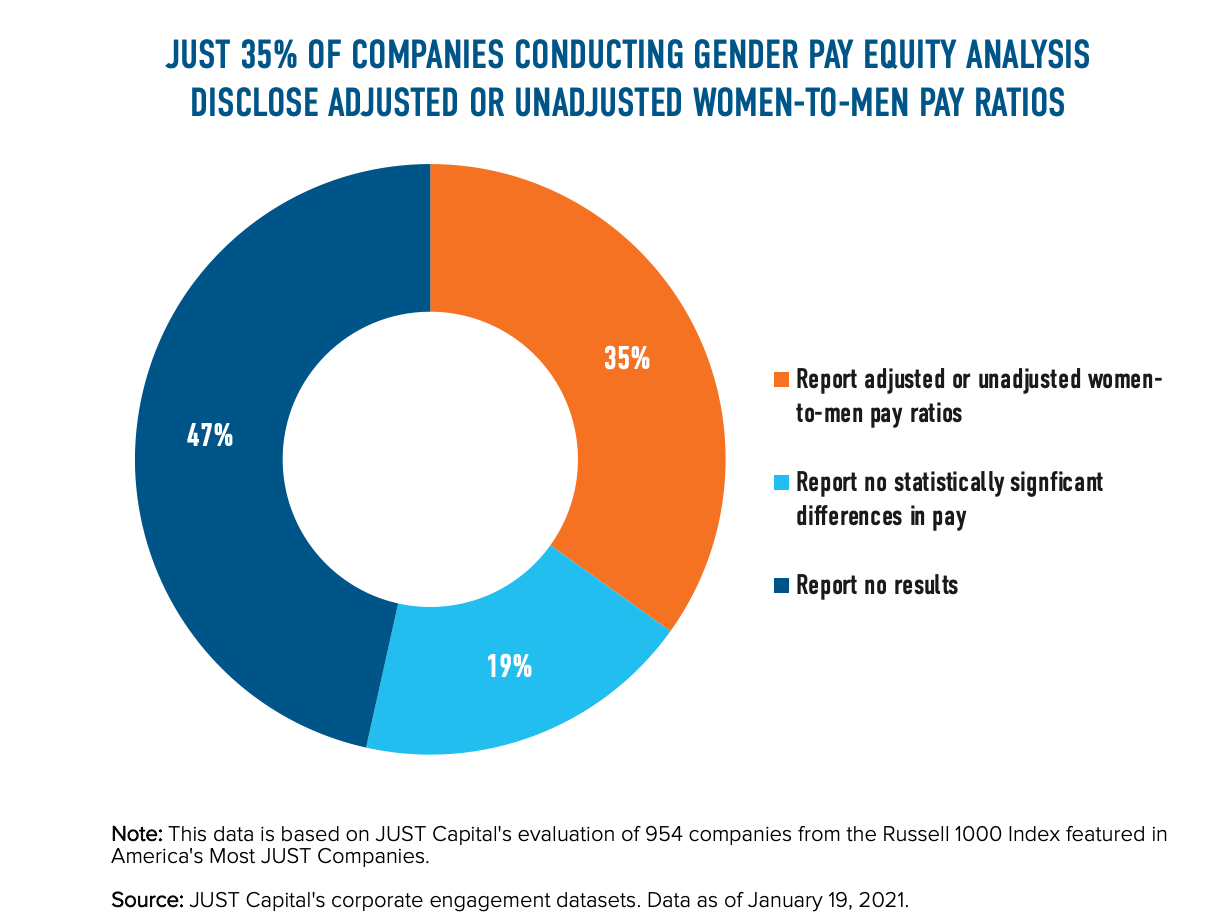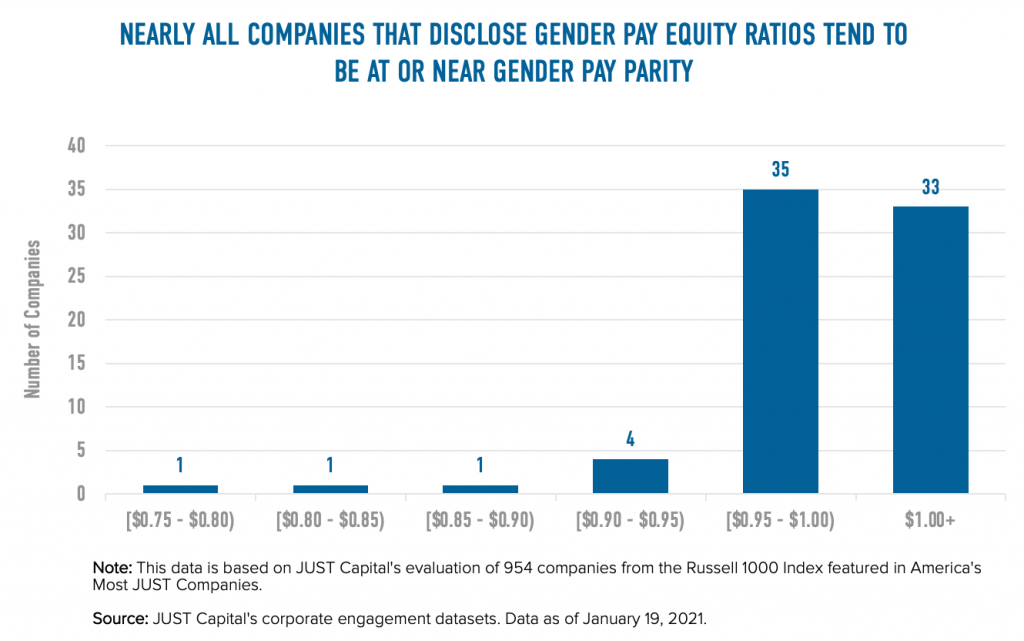Just 23% of the Largest U.S. Companies Analyze Their Gender Pay Gaps, Marking Stalled Progress Toward Wage Equity
Last week marked International Women’s Day and, for many companies, a reminder of the importance of equal pay in advancing gender equity. As organizations sent out messages uplifting women in the workplace, a U.K.-based Twitter bot shared (using public government data) the gap between women’s and men’s earnings at these employers, noting how rhetoric doesn’t always match action in this space. Today, one week later, marks another milestone in the fight to close the gender pay gap, Equal Pay Day in the United States.
Falling on March 15 this year, Equal Pay Day signifies how far into 2022 women must work to earn what men did in 2021. The date is determined from the U.S. Census data, which shows that women working full-time earn, on average, 83% of what men are paid. This year’s is earlier than 2021’s, March 24, but the impact of the COVID-19 pandemic should also be taken into consideration.
Women’s participation in the workforce still remains below pre-pandemic levels and many have sought part-time work to balance caregiving and other domestic responsibilities, which continue to fall more frequently on women. Just this week the U.S. EEOC issued new guidance warning that discrimination against caregivers, including mothers, may be unlawful. And Misty Heggeness, an economist at the Census Bureau told Axios, “There are a lot of reasons these women aren’t back to work. Discrimination can’t be one of them.”
Women of color have been especially affected by these shifts and the time they must work to match white male earnings reflects this. This year, AANHPI Equal Pay Day falls on May 3, Black Women’s on September 21, Native Women’s on November 30, and Latina’s on December 8.
As gender pay gaps persist, JUST Capital looked at how many of America’s largest corporations disclose that they conduct gender pay analyses and which of them publicly release their results. This year, we found that just under a quarter of the 954 companies we evaluated for our 2022 Rankings, 23% (215 companies), disclose conducting a gender pay gap analysis. It’s worth noting that to arrive at this number, we only considered companies’ disclosures that specifically point to gender as a criterion in pay equity analyses and discounted statements which did not explicitly state which demographic groups said analyses focused on.
Our 2022 Rankings feature a much more granular look at pay equity disclosure, enabling us to assess which companies disclose conducting pay gap analyses by race and gender in particular. Previous years’ Rankings, featuring non-aggregated assessments of pay equity disclosure, show fairly consistent levels of disclosure – 14% of companies disclosed a pay gap analysis in 2019, rising to 22% in 2020, and dropping by one percentage point to 21% in 2021.
It’s clear that despite increased calls from employees, nonprofits, government, the American public, and some of the world’s largest institutional investors to invest in gender equity to support a more equitable recovery for women in the workplace, progress has stalled in the last three years. Corporate America has a long way to go toward transparency, and more important, performance, on this critical issue.

To gain a better understanding of corporate performance on pay equity, we looked at how many of the 215 companies that disclose conducting a gender pay gap analysis publicly release the results. We found that 35% of these companies (75 companies) report the exact women-to-men adjusted or unadjusted pay ratios, while another 19% share that their gender pay analyses found no statistically significant differences in pay without providing ratio details. And while over a half of the companies that disclose conducting gender pay gap analyses share some sort of results, 47% of these companies still do not release any information about their actual performance on issues of gender pay equity.

Taking a closer look at the 75 companies that disclose their women-to-men pay ratios, we found that the overwhelming majority of companies have achieved full or near-full pay parity between men and women. These figures tell us that companies continue to release information about their gender pay equity performance only when they are doing well or have achieved their parity goals. Within this group, 28 companies disclose reaching full parity, or a women-to-men pay ratio of one.

Among those disclosing the adjusted or unadjusted women-to-men ratio, 28 companies are at perfect parity at 1.00. However, the vast majority of companies which did disclose pay equity ratios show strong clustering around 1.00. A total of 67 companies have ratios of 0.95 to 1.05 (including the 28 at 1.00), indicating that these companies are close to achieving pay equity. NortonLifeLock discloses the highest women-to-men pay ratio among companies we rank, with a ratio of 1.12 across executive, management, and non-management levels. Aflac and Microsoft follow suit, reporting salary ratios of 1.01 and 1.001, respectively. Microsoft also announced that it had expanded its pay equity analysis work to examine pay for women in its five largest markets outside the U.S. Across all companies who provided the exact women-to-men pay ratio, transparent and detailed disclosure was consistent.
As the pandemic persists, its adverse impact for women is sure to persist as well. Companies could continue to face scrutiny from a range of stakeholders, including the American public, on how they’re moving from rhetoric to uplift women to action to support women – that should include analyzing and working to close their gender pay gaps.






